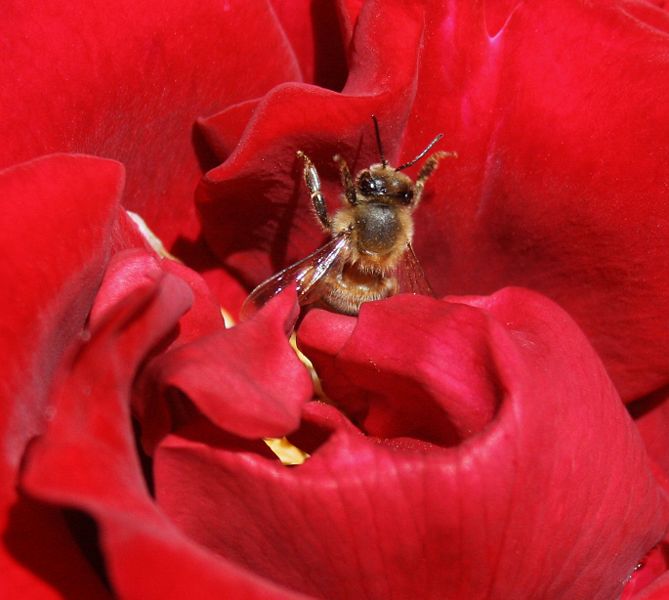|
APIAN
(AY-pee-uhn)
Relating
to or having the characteristics of bees.
Common
clues: Like
some swarms; Bee-related; Beelike; Of bees; For the bees; Like
some colonies
Crossword
puzzle frequency:
once a year
News:
Bees
in freefall as study shows sharp US decline
Video:
Secret
Life of Bees
Trailer
The
keeping of bees is like the direction of sunbeams.
Henry
David Thoreau
Bees
are flying insects closely related to wasps and ants. Bees are a
monophyletic lineage within the superfamily Apoidea, presently
classified by the unranked taxon name Anthophila. There are
slightly fewer than 20,000 known species of bee, in 9 recognized
families,[1] though many are undescribed and the actual number is
probably higher. They are found on every continent except
Antarctica, in every habitat on the planet that contains
flowering dicotyledons.

Bees
are adapted for feeding on nectar and pollen, the former
primarily as an energy source, and the latter primarily for
protein and other nutrients. Most pollen is used as food for
larvae.
Bees
have a long proboscis (a complex "tongue") that enables
them to obtain the nectar from flowers. They have antennae almost
universally made up of thirteen segments in males and twelve in
females, as is typical for the superfamily. Bees all have two
pairs of wings, the hind pair being the smaller of the two; in a
very few species, one sex or caste has relatively short wings
that make flight difficult or impossible, but none are wingless.
The
smallest bee is the dwarf bee (Trigona minima), about 2.1 mm
(5/64") long. The largest bee in the world is Megachile
pluto, which can grow to a size of 39 mm (1.5"). Member of
the family Halictidae, or sweat bees, are the most common type of
bee in the Northern Hemisphere, though they are small and often
mistaken for wasps or flies.
The
best-known bee species is the Western honey bee, which, as its
name suggests, produces honey, as do a few other types of bee.
Human management of this species is known as beekeeping or
apiculture.
This
article is licensed under the GNU
Free Documentation License.
It uses material from the Wikipedia
article "Bee".
APIAN
(75) 15 Tu+ >1 97 Of bees
12
Th- >1 07 Beelike
9
Tu+ >1 06 Bee-related
6
We- >1 07 Pertaining to bees
5
Th+ >1 08 Like some colonies PENAL
4
Th- >1 08 Like some queens
09
Concerning bees
3
Th- >1 04 For the bees
3
Th+ >1 03 Like some drones
3
Th+ >1 03 Like some swarms
97
Relating to bees
1
Fr NYT 96 Bee-fitting description?
1
We CSy 09 Bee-like
1
Th NYT 98 Beeish
1
Fr NYT 08 Dealing with honey makers
1
Th NYS 06 Having a lot of buzz, maybe
1
Th NYT 03 Hive-connected
1
Fr NYT 01 Hive-related
1
Tu LAT 09 Like beehives
1
Th CHE 07 Like certain workers
1
Th LAT 03 Like hives
1
Th NYS 07 Like honeycombs
1
Th WSJ 99 Like some workers
01
Of certain buzzers
1
Th NYT 03 Of concern to beekeepers
1
Th NYT 92 Of the bees
1
Th NYS 07 Pertaining to some workers
|